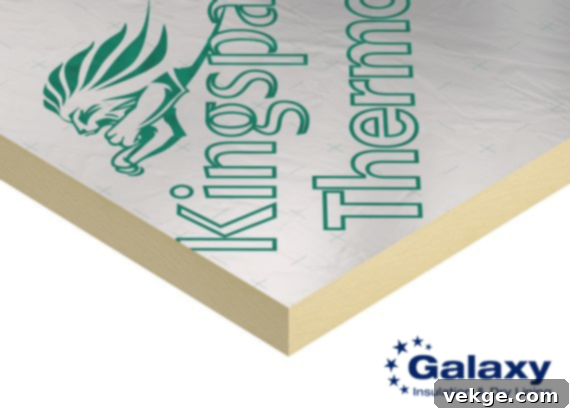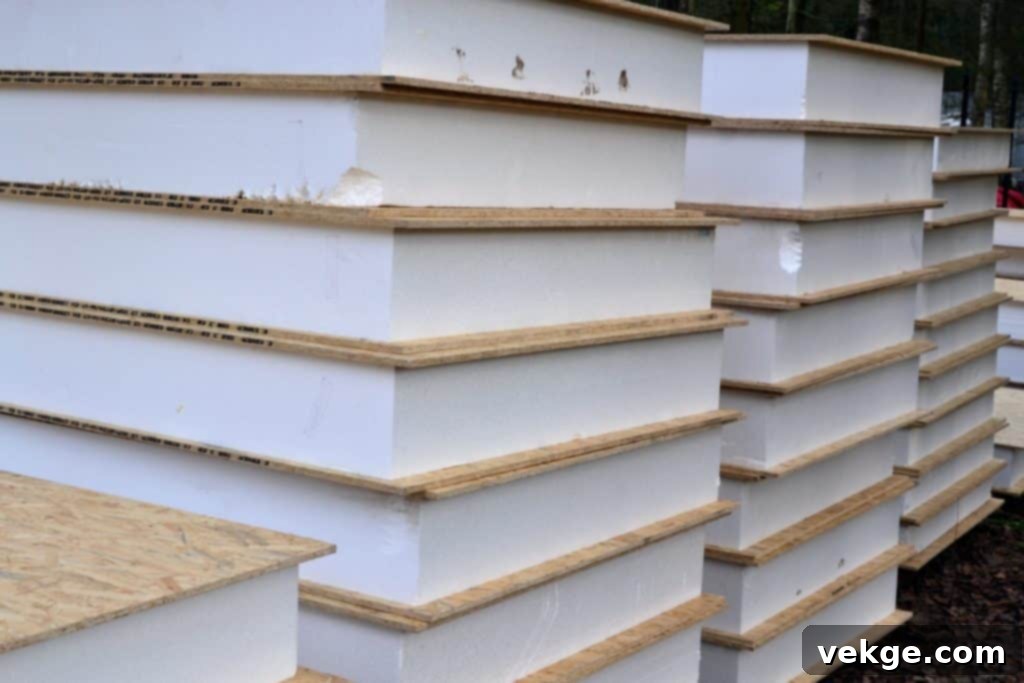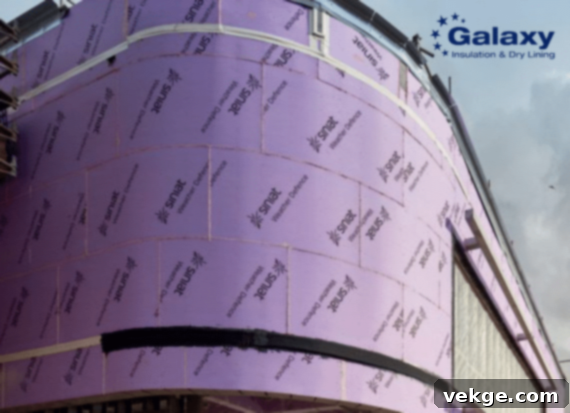Building for the Future: A Comprehensive Guide to Weather-Resistant Materials in Modern Construction
In the dynamic landscape of modern architecture, the selection of building materials transcends mere aesthetics or structural strength. It is a critical decision that dictates a building’s ability to endure the relentless forces of nature, ensuring its longevity, safety, and operational efficiency for decades to come. As climatic conditions become increasingly unpredictable, from scorching summers and torrential rains to freezing winters and powerful winds, the demand for truly weather-resistant construction materials has never been more pressing. This in-depth article serves as your definitive guide, navigating through the complexities of high-performance materials designed to protect structures from the elements, enhance their resilience, and secure their long-term value. We’ll explore innovative solutions that stand guard against moisture, temperature fluctuations, and environmental degradation, laying the groundwork for sustainable and robust architectural masterpieces.
1. The Indispensable Role of Weather Resistance in Modern Construction
Why is weather resistance not just important, but absolutely indispensable, in the realm of contemporary construction? The answer extends far beyond simply keeping a structure standing. It fundamentally underpins the building’s ability to provide a safe, comfortable, and healthy environment for its occupants while also preserving its structural integrity and aesthetic appeal over time. Neglecting this crucial aspect can lead to a cascade of problems, including costly repairs, reduced energy efficiency, compromised indoor air quality due to mold, and a significant depreciation in property value.
Materials engineered for superior weather resistance, such as the robust Siniat Weather Defence Board, represent the vanguard of resilient building practices. This specialized gypsum-based board is designed for external sheathing, acting as an impenetrable first line of defense against the harshest external conditions. It ensures that the building envelope remains uncompromised by moisture ingress, powerful wind loads, and extreme temperature variations that characterize diverse global climates. Its unique composition, often featuring a water-repellent core and glass-mat facers, provides exceptional dimensional stability and mold resistance, making it an ideal choice for rainscreen applications and general weatherproofing.
By integrating such high-performance materials from the outset, builders establish the foundational elements of a sanctuary that remains largely unaffected by the capricious nature of weather. This foresight translates into fewer maintenance issues, prolonged structural life, and a more comfortable interior environment, proving that investing in weather-resistant solutions is an investment in long-term performance and peace of mind.
2. Insulation: Your Essential Ally Against the Elements and for Energy Efficiency
- Understanding Insulation as a Thermal Armor: Insulation is far more than just a layer; it is the building’s vital thermal armor, playing a pivotal role in creating a resilient and energy-efficient structure. High-quality insulation, particularly innovative solutions like Kingspan Thermapitch, forms a critical barrier that meticulously shields the interior from external temperature extremes. This means keeping the heat out during scorching summers and retaining warmth during frigid winters, thereby stabilizing the internal climate and minimizing energy demand. Beyond just thermal resistance, advanced insulation solutions contribute significantly to a building’s overall weatherproofing strategy by mitigating thermal bridging and preventing condensation within the building envelope.
- Benefits Extending Beyond Weather Resistance: The advantages of high-quality insulation extend well beyond its primary role in weather protection. By creating a superior thermal envelope, it not only ensures a stable and comfortable indoor climate but also delivers substantial energy savings over the building’s lifespan. Materials such as Kingspan Thermapitch, known for its outstanding thermal performance, exemplifies this efficiency. Its rigid polyisocyanurate (PIR) core offers excellent R-value per inch, making it highly effective in both heat retention during colder months and heat repulsion during warmer periods. This capability directly reduces the reliance on costly heating, ventilation, and air conditioning (HVAC) systems, leading to significantly lower utility bills and a reduced carbon footprint. Furthermore, by preventing temperature fluctuations, insulation helps to protect the building’s structural components from thermal stress, contributing to its overall durability.

- Key Considerations for Optimal Selection: When selecting insulation, a holistic approach is essential. Factors such as thermal performance (R-value), moisture resistance, vapor permeability, fire rating, and environmental impact must be thoroughly evaluated. For instance, in areas prone to high humidity or heavy rainfall, insulation with excellent moisture management properties is crucial to prevent water ingress and potential mold growth. Similarly, considering the product’s embodied energy and recyclability aligns with broader sustainability goals. The objective is to select a product that not only perfectly aligns with your specific weatherproofing and thermal performance needs but also contributes positively to the overall energy efficiency, health, and environmental sustainability of the building. This strategic choice ensures a building that is comfortable, cost-effective, and environmentally responsible.
3. Pioneering Innovations in Weather-Resistant Materials: Shaping the Future of Construction
The landscape of weather-resistant materials is a vibrant testament to human ingenuity, with continuous advancements redefining our approach to durable and sustainable construction. These innovations are not just about making materials stronger; they’re about making them smarter, more environmentally friendly, and ultimately, more resilient. Let’s explore some of the most impactful recent trends that are shaping the future of building envelopes:
- Embracing Eco-Friendly and Sustainable Solutions: The urgent global push towards sustainability has catalyzed the development of building materials that are not only supremely weather-resistant but also significantly environmentally friendly. Innovations in this space prioritize reducing the carbon footprint throughout the material’s lifecycle, from manufacturing to end-of-life. This includes the use of recycled content, bio-based polymers, low Volatile Organic Compound (VOC) formulations, and sustainably sourced raw materials. Examples include high-performance insulation made from recycled plastic bottles, facade panels incorporating renewable resources, and advanced coatings designed for extreme durability with minimal environmental impact. These solutions offer a dual benefit: superior protection against the elements while actively contributing to a healthier planet without compromising on durability or performance.
- Seamless Integration of Smart Technology: Emerging technologies are increasingly being integrated into building materials, transforming them into ‘smarter’ components of the building envelope. Imagine materials that possess autonomous capabilities, such as self-healing concrete that can repair minor cracks when exposed to moisture, or dynamic coatings that can change their thermal properties in response to external temperature fluctuations, reflecting infrared radiation to reduce heat absorption in hot climates and retaining it in colder conditions. Further advancements include embedded sensors that monitor moisture levels, temperature, and structural stress, providing real-time data to optimize building performance and proactively identify potential issues before they become critical. These smart materials promise unprecedented levels of durability, energy efficiency, and predictive maintenance.
- The Power of Advanced Composite Materials: The fusion of disparate materials to harness the synergistic strengths of each is a rapidly growing trend in weather-resistant construction. These advanced composites, which often combine polymers, fibers, and binders, offer significantly enhanced weather resistance, durability, and a strength-to-weight ratio that often surpasses traditional materials. Examples include fiber-reinforced polymers (FRPs) used for cladding and structural elements, engineered wood products with enhanced moisture resistance, and advanced laminates for roofing and facades. Their key advantages lie in their tailorability, allowing engineers to design materials with specific properties like extreme rigidity, flexibility, or corrosion resistance. This adaptability not only boosts protection against the elements but also facilitates innovative architectural designs that were previously unachievable with conventional materials.
- Nanotechnology’s Promise: At the cutting edge, nanotechnology is beginning to revolutionize material science by manipulating matter at the atomic and molecular level. This enables the creation of weather-resistant materials with unprecedented properties, such as superhydrophobic surfaces that repel water completely, self-cleaning coatings that prevent dirt and pollutants from adhering, and UV-resistant additives that significantly extend the lifespan of paints and sealants. While still in its nascent stages for widespread commercial application, nanotechnology holds immense promise for developing the next generation of building materials that are even more resilient and maintenance-free.
4. Weighing the Worth: The Comprehensive Cost-Benefit Analysis of Weather-Resistant Materials

While the initial outlay for premium weather-resistant materials might appear more significant than conventional alternatives, a thorough cost-benefit analysis reveals a compelling narrative of long-term savings and enhanced value. Investing in solutions like Siniat Weather Defence Board and Kingspan Thermapitch should not be viewed as mere expenses but rather as strategic, value-adding investments in the enduring future of a building.
- Durability Translates Directly to Savings: The inherent resilience and extended lifespan of these advanced materials significantly reduce the need for frequent repairs, maintenance, and premature replacements. Unlike cheaper alternatives that may degrade rapidly under harsh weather conditions, leading to recurring costs, high-quality weather-resistant materials maintain their integrity over a much longer period. This durability translates directly into substantial cost savings over the building’s operational life, making the initial investment a wise financial decision that mitigates future liabilities and unforeseen expenses. Furthermore, reduced maintenance cycles mean less disruption for occupants and a more consistent operational budget.
- Energy Efficiency as a Perpetual Cost-Saver: The superior insulating properties of materials such as Kingspan Thermapitch play a pivotal role in achieving profound energy conservation. By creating a highly efficient thermal envelope, these materials effectively minimize heat transfer between the interior and exterior environments. This ability to maintain a stable internal temperature drastically reduces the reliance on energy-intensive heating and cooling systems. Consequently, building owners benefit from consistently lower energy bills, often translating into thousands of pounds saved over the years. This energy efficiency not only offers financial returns but also contributes to a building’s green credentials, aligning with global efforts to reduce energy consumption and carbon emissions.
- Preserving and Enhancing Property Value: Buildings constructed with high-quality, weather-resistant materials are inherently more attractive to potential buyers and tenants. They often maintain their aesthetic appeal, structural integrity, and functional performance for longer periods, resisting common issues like moisture damage, fading, and structural compromise. This preservation of quality can significantly boost the property’s market value and rental yield. Furthermore, resilient construction is increasingly valued in a climate-conscious market, potentially leading to higher resale values and improved insurance rates due to reduced risk of damage. Investing in these materials is therefore a proactive strategy to safeguard and enhance a building’s long-term financial asset value, making it a more desirable and robust investment.
5. Seamless Integration: Ensuring Harmony with Modern Construction Practices and Design
The successful integration of weather-resistant materials into modern construction projects demands a harmonious blend of traditional craftsmanship and contemporary innovation. The selection of materials such as Siniat Weather Defence Board and Kingspan Thermapitch must not only meet stringent standards for durability, performance, and energy efficiency but also seamlessly align with the aesthetic ambitions and functional demands of contemporary architecture. This requires careful consideration of how these advanced solutions fit into the overall design, construction methodology, and regulatory landscape.
- Adaptability to Diverse Design Aesthetics: Modern construction is characterized by an incredible diversity of design aesthetics, pushing the boundaries of form and function. Weather-resistant materials are increasingly engineered to be highly versatile, capable of catering to a vast range of architectural styles—from minimalist facades to complex, curvilinear forms—without ever compromising their core protective function. This includes a wide array of finishes, colors, and textures, allowing architects to achieve their creative visions while ensuring long-term resilience. For instance, advanced cladding systems can mimic natural materials like wood or stone but offer superior weather resistance and lower maintenance, providing both beauty and brawn. The modular nature of many contemporary weather-resistant panels also facilitates efficient installation and precise detailing, critical for maintaining an immaculate and protective building envelope.
- Compliance with Evolving Building Regulations and Standards: As building codes and industry standards continue to evolve, incorporating stricter requirements for safety, energy efficiency, and environmental performance, the strategic choice of materials becomes paramount. Weather-resistant materials are often at the forefront of meeting these stringent requirements, providing a critical pathway to compliance and peace of mind for builders, developers, and occupants alike. This includes adherence to fire safety ratings, wind load resistance, thermal performance targets, and moisture management protocols. Utilizing certified and tested weather-resistant products ensures that a building not only withstands the elements but also meets or exceeds the regulatory benchmarks for a safe, sustainable, and high-performing structure. Staying abreast of these regulations is vital, and modern materials are designed with these requirements in mind.
- Optimized Ease of Installation and Construction Efficiency: The practical aspects of construction are significantly influenced by the ease with which materials can be installed. The integration of advanced weather-resistant materials into construction projects is often streamlined by their intelligent design, which frequently considers modularity, lightweight properties, and straightforward fixing methods. This focus on installability ensures that projects can proceed efficiently, remain on schedule, and stay within budget, all while achieving the desired level of weather resistance and performance. Prefabrication techniques, for instance, can incorporate weather-resistant panels off-site, reducing on-site labor and construction time. This efficiency not only speeds up project completion but also minimizes potential human error during installation, which is crucial for the integrity of the weatherproofing system. Ultimately, materials that are simple to handle and install contribute to overall project success and the long-term performance of the building.
Conclusion: Building Resilience for Generations
In the relentless pursuit of durable and sustainable architecture, weather-resistant building materials stand as the unsung heroes of modern construction. They silently but steadfastly safeguard the integrity, longevity, and comfort of structures against the relentless and often unpredictable forces of nature. From the robust, moisture-defying capabilities of Siniat Weather Defence Board, designed to form an impenetrable outer shield, to the exceptional insulating prowess of Kingspan Thermapitch, which meticulously regulates internal climates and champions energy efficiency, these advanced materials are absolutely pivotal. They enable the crafting of buildings that not only stand the rigorous test of time but also embody the core ethos of energy efficiency, environmental sustainability, and occupant well-being.
As we navigate the increasingly complex challenges of modern construction, exacerbated by climate change and evolving design demands, the strategic and informed choice of weather-resistant materials emerges as a fundamental cornerstone. It is this thoughtful selection that ensures our architectural creations remain resilient, high-performing, and aesthetically pleasing—not just for today’s inhabitants, but for generations to come. By prioritizing these innovative solutions, we build more than just structures; we build enduring legacies of safety, comfort, and sustainability that can withstand any storm.
